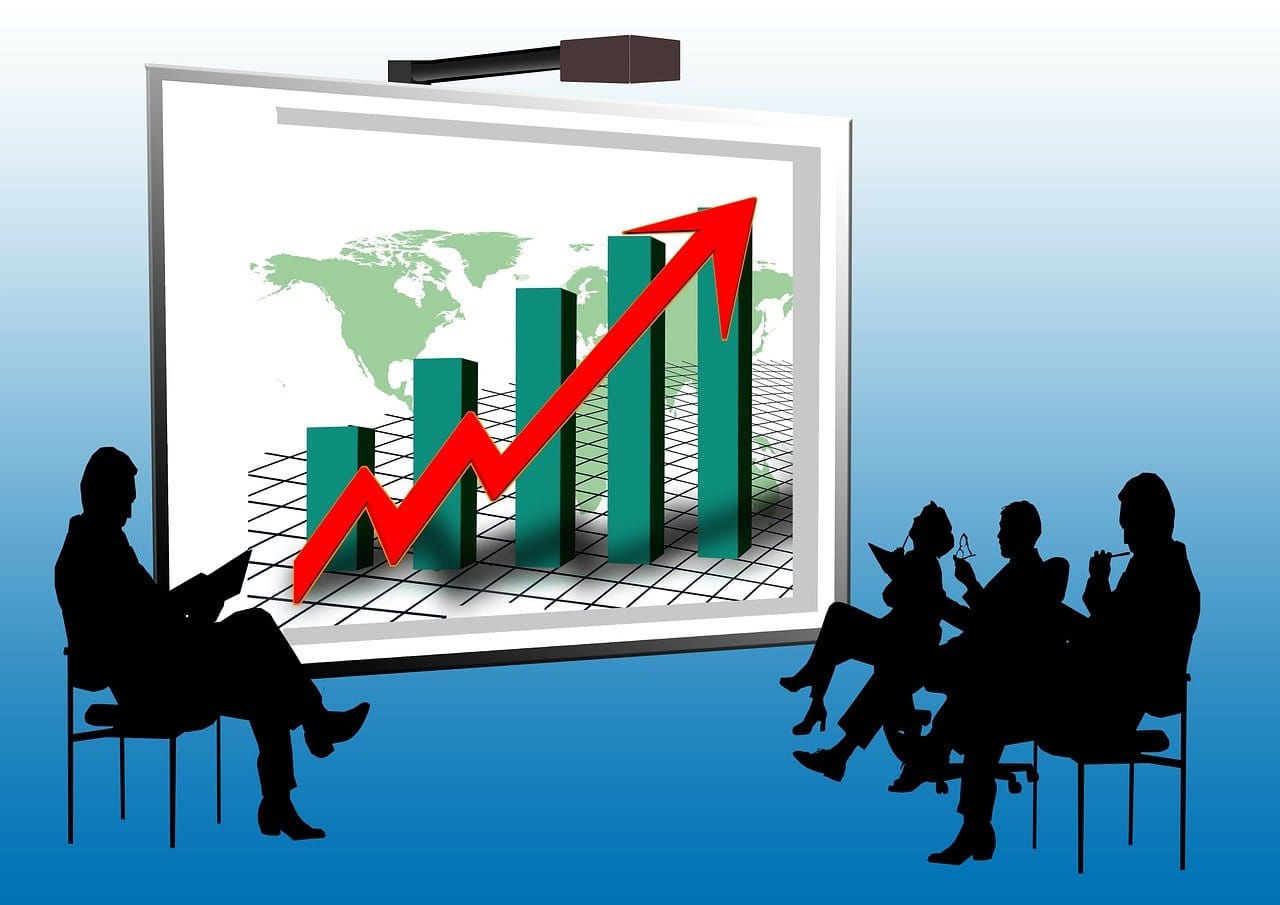Navigating Through Inflation: Essential Strategies for Preserving Your Purchasing Power
Discover essential strategies for preserving your purchasing power amidst inflation. Navigate insights, investment tips, and financial tactics for safeguarding against inflationary pressures.

As the cost of living continues to climb, inflation becomes more than just an economic term; it becomes a tangible challenge for households worldwide. The essence of inflation is simple: it's the rate at which the general level of prices for goods and services is rising, and subsequently, eroding purchasing power. To gauge inflation, economists often turn to the Consumer Price Index (CPI), which tracks the cost of a basket of goods and services over time.
Unpacking the Drivers of Today's Inflation
The current inflationary climate didn't emerge from a vacuum. It's the culmination of various complex factors:

Supply Chain Disruptions
The onset of the COVID-19 pandemic saw an unprecedented disruption in global supply chains. As factories around the world shut down due to lockdowns, the production of goods came to a near standstill. The image of container ships stranded at sea became a stark symbol of the times. This halt in manufacturing and shipping led to a supply shock, which triggered an increase in the costs of goods ranging from the microchips used in smartphones and cars to basic construction materials like lumber.
A real-world example of this was the automotive industry, which faced a severe shortage of semiconductors. This not only slowed vehicle production but also pushed up prices for new and used cars, contributing to the inflationary wave. Meanwhile, homebuilders grappled with not only a scarcity of lumber but also soaring prices that led to increased costs of new homes and renovations.
Surging Demand
As vaccines became widely available and the world began to reopen, there was a collective unleashing of pent-up demand. Consumers, flush with savings from months of lockdown and stimulus checks, were eager to spend. This surge in demand was met with a supply chain that was, and still is, struggling to recover from the effects of the pandemic. The resulting supply-demand imbalance was felt across various sectors.
For instance, the travel industry witnessed a significant bounce-back, often referred to as "revenge travel," where consumers, eager to make up for lost time, booked trips en masse. This sudden spike in demand led to higher ticket prices, packed flights, and crowded tourist destinations, contributing further to inflation as the travel services struggled to ramp up their capacities to pre-pandemic levels.
Expansionary Fiscal Policies
In response to the economic fallout of the pandemic, governments across the globe deployed massive fiscal stimulus to support individuals and businesses. The United States, for example, passed several stimulus bills, including the CARES Act, which provided direct payments to individuals, enhanced unemployment benefits, and support for small businesses through the Paycheck Protection Program (PPP).
These policies aimed to keep the economy afloat during the shutdowns, but they also had the side effect of injecting substantial liquidity into the market. With more money in their pockets, consumer spending increased, but against a backdrop of constrained supply, this additional spending accelerated inflation.
Moreover, these policies raised concerns about long-term debt sustainability. The increased government borrowing to fund stimulus packages has led to debates over the potential need for future tax increases or spending cuts, which could have their own implications for economic growth and inflation.
In summary, these three factors—supply chain disruptions, a surge in demand, and expansionary fiscal policies—have worked in concert to create a perfect storm for inflation. Each of these elements underscores the delicate balance between managing a health crisis and its economic repercussions, revealing just how interconnected and fragile the global economy is. Understanding these dynamics is crucial for policymakers, businesses, and consumers as they navigate through the challenges of inflation in a post-pandemic world.
Prudent Measures to Shield Against Inflation
In the face of such economic headwinds, The Disproportionate Impact of Inflation on Society
Inflation's reach extends across the entire economy, yet its grip is notably tighter on certain demographics. The metaphor of rising tides and lifting boats falls apart when we consider that not all boats are created equal—some are more buoyant by virtue of their size and build, while others, smaller and more vulnerable, risk being swamped by the smallest of waves.
Low-Income Families: A Precarious Balancing Act
For families on the lower end of the income spectrum, even a minimal rise in the cost of essentials can destabilize an already precarious financial balance. These families often allocate a larger portion of their income to necessities like food, housing, and transportation. When the prices of these essentials inflate, the families have less flexibility to absorb the increased costs, leading to difficult decisions—such as choosing between groceries and heating bills.

For example, consider the price of bread, which may see a seemingly minor increase per loaf. However, for a family that is already stretching each dollar, this adds up over time and across other staple goods, potentially leading to food insecurity.
Retirees on Fixed Incomes: Watching Savings Shrink
Retirees often rely on fixed income sources such as pensions, social security, and savings that don’t necessarily increase with inflation. As the cost of living rises, their income buys less and less. This erosion of purchasing power can be particularly distressing for those who have carefully planned for their retirement years, only to find that the goalposts have moved due to inflation.
Imagine a retiree who budgeted for a retirement with a certain expectation of how far their pension would go. As inflation accelerates, the costs of medication, healthcare, and other essentials exceed those expectations, leaving them financially exposed.
Wage Earners: The Wage-Price Spiral
Wages typically lag behind prices in times of inflation, which means that salary increases that are meant to match inflation often come too late, after the increased prices have already taken their toll. This delay can lead to a phenomenon known as the wage-price spiral, where wages and prices chase each other upwards, further fueling inflation.
For instance, if workers demand higher pay to keep up with the cost of living, businesses may raise prices to maintain their profit margins, setting off a new round of wage demands and continuing the cycle.
Students and Young Professionals: The Debt Dilemma
Students and young professionals often carry significant debt, especially in the form of student loans. Inflation can exacerbate their challenges by increasing the cost of living while they are still trying to establish themselves in their careers and pay down their debt. Higher inflation can lead to higher interest rates, which in turn, can increase the cost of borrowing and the payments on variable-rate loans.
Take a recent graduate entering the workforce with a considerable amount of student loan debt. As inflation rises, so might the interest rates on their loans, making it more difficult to pay off the debt, especially if their entry-level wages don’t keep pace with inflation.
The Inflationary Paradox: Saving vs. Spending
There's also a paradox within inflation's effect on saving and spending behaviors. Typically, saving money is seen as a financially prudent habit. However, in times of high inflation, the value of cash savings can erode, discouraging saving and encouraging spending, which can further accelerate inflation.
For example, if a person has saved a sum of money, inflation reduces the value of that money in terms of purchasing power. Consequently, they might be incentivized to spend or invest that money rather than watch it diminish in value, feeding back into the cycle of inflation.
Inflation, therefore, acts as a multifaceted economic force, one that does not distribute its burdens evenly across the population. Recognizing the disproportionate effects of inflation is crucial for developing targeted policies and strategies to protect the most vulnerable and to maintain economic stability.
Navigating the Inflationary Landscape with Awareness and Resilience
Inflation is not a mere statistical inconvenience; it's a real-world force that reshapes economies, alters livelihoods, and redefines financial well-being. The complexity of inflation—driven by supply chain disruptions, surging demand, and expansive fiscal policies—casts a long shadow on various segments of the population. The uneven burden it places on society calls for both awareness and action.
Low-income families face the harshest realities, with budgetary tightropes stretched to their limits. Retirees on fixed incomes watch the erosion of their financial security as the costs of living climb. Wage earners find themselves in a catch-up game with escalating prices, and the young enter the fray shouldering debt that only grows heavier with the weight of inflation.
In response to these challenges, governments, policymakers, and financial institutions must craft nuanced strategies to cushion the vulnerable and forge paths toward economic stability. For individuals, the onus is on financial literacy and adaptability—budgeting with precision, investing with foresight, and saving with an understanding of inflation’s insidious effects.
While inflation may be a fact of economic life, it does not have to dictate the quality of life. By taking informed and proactive steps—both at the macro and microeconomic levels—society can mitigate the effects of inflation and navigate through its tumultuous waters with greater confidence. The journey through an inflationary era is complex, but with resilience and ingenuity, stability can be sought and, to some degree, secured, in the face of economic uncertainty.




